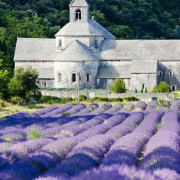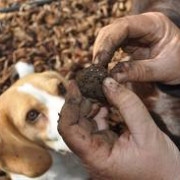
During Medieval Times, the village of Richeranches prospered as a Commanderie of the Order of the Knights Templar. It seems the business acumen exhibited by these ancient residents of the village – the Knights Templar (who are often credited with creating the first banking system) – has been inherited by their descendants, as today the village has claimed it’s place as one of “the” weekly venues for a Truffle Market where buyers from throughout France gather to bid for these “diamantes noir” (black diamonds).

Each Saturday morning from November to March, buyers and sellers flock to the Truffle Market at Richeranches
These knobby little subterranean nuggets, are often known as the “most expensive food in the world”. These trade at a wholesale and retail level in the local markets, some of them then selling in large towns and cities for up to 3,000.00 Euros per kilo (up to US$1,900.00 per lb), where they will grace the tables of the finest restaurants. Currently, the South East Region of France accounts for a little more than 80% of all truffle production in France. The Northern Vaucluse (where Richeranches is located), and the Southern Drome, account for approximately 60% of that production.
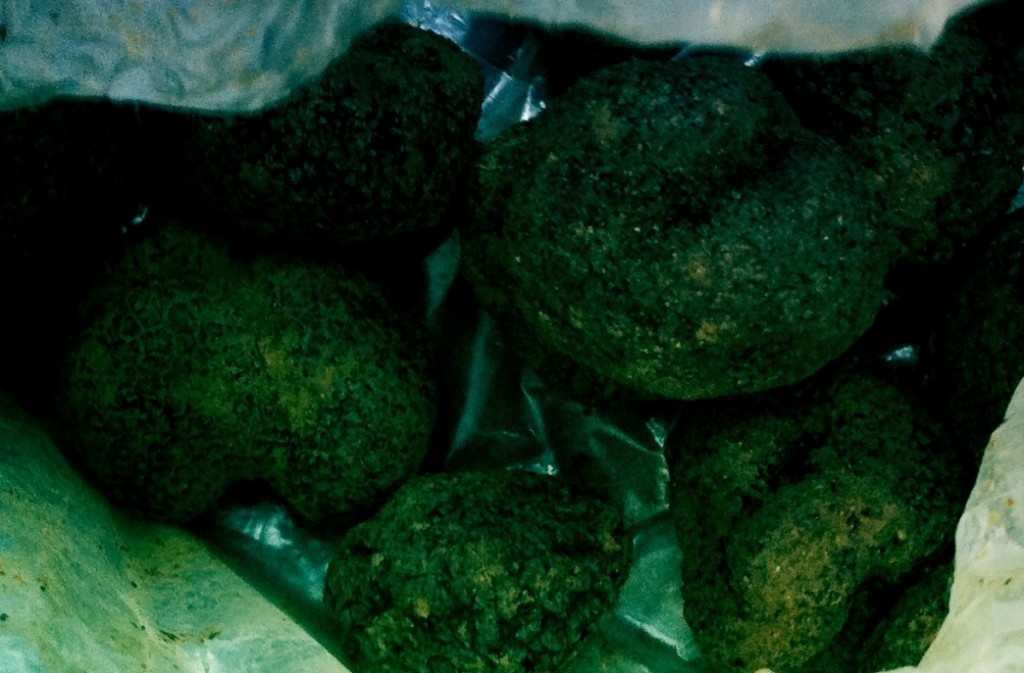
Black Diamonds!
You could just follow your nose, but as you cross the bridge approaching the village, a large “Panneau” announces the “Marche au Truffes” held every Saturday morning between the months of November and March. This Market is serious business – where the “black diamonds” carefully cocooned in cloth or plastic bags, are exchanged between the very knowledgeable buyers who represent wholesalers, restaurants and other agents, and growers, who carefully watch over and tend their truffle oak woods which dot the countryside throughout the Luberon and the Vaucluse. It is a labor of love for the first ten years which is the time it takes before the first truffles begin to appear on the roots of the host trees.

Truffle trading in Richeranches
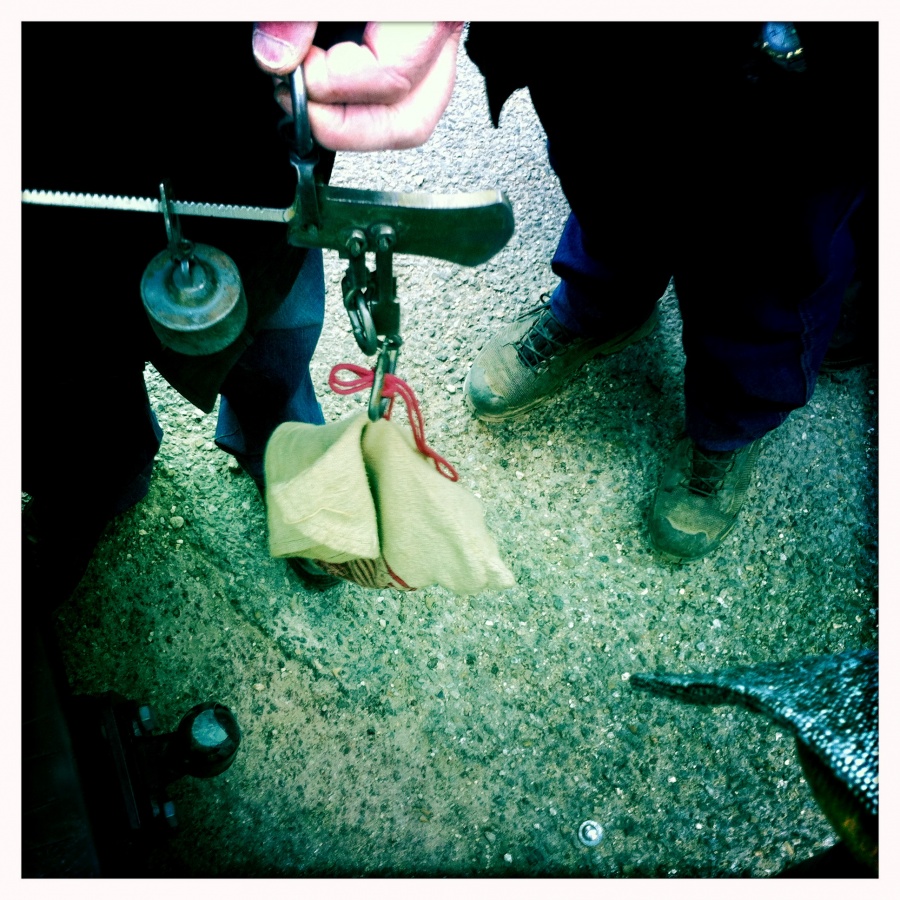
Truffles are weighed very carefully

Truffle Woods are carefully and lovingly tended by the truffle growers for years before they may see any results
In Richeranches, the third Sunday of January each year sees the well known (and well attended), Truffle Mass.

The Truffle Mass
As this time draws near, the small Provencal village makes preparations to receive thousands and thousands of visitors who will gather as close as they can to the center of the activity at the Church of Notre Dame de Nazareth, so that they can witness the annual Truffle Mass dedicated to St. Antoine – the Patron Saint of Truffle growers. The crowds have grown to such proportions that a giant TV screen are erected outside in the courtyard of the Knights Templars Commandery, so all visitors can get a close up view of the proceedings and join in the ceremony.
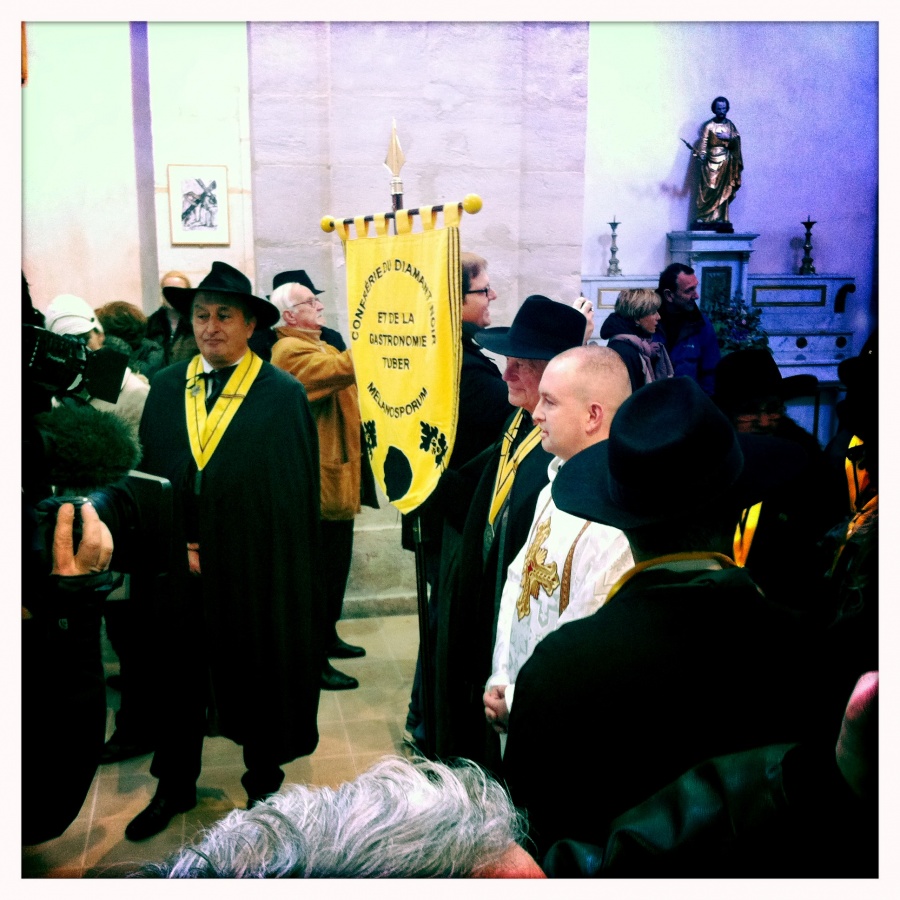
The Truffle Mass is about to commence
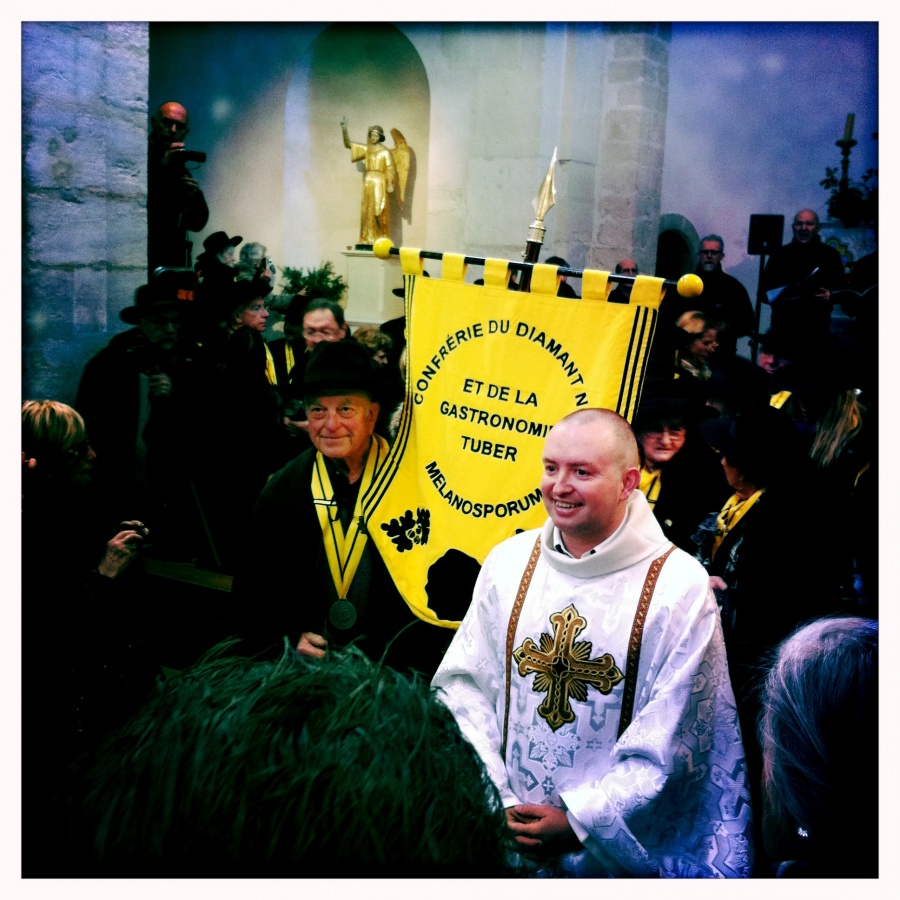
The Procession
The Mass is said in the old Provencal language, during which the truffles are blessed and prayers are offered for a successful truffle harvest. When it is time for the collection, the baskets are filled with truffles, and the church fills with the aroma of the “black diamond” also known as les truffes, rabasse or by its botanical name, Tuber Melanosporum.

The Auction takes place outside the Mairie
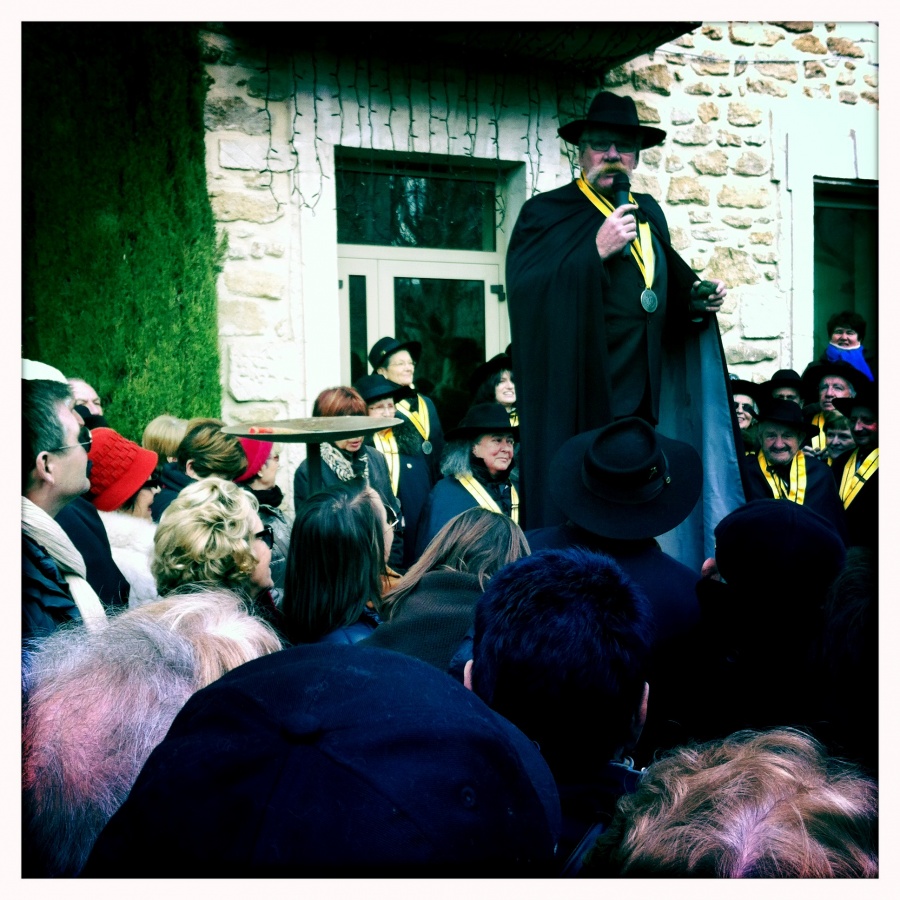
The auction begins
Members of the “Conferrerie du Diamante Noir et de la Grastronomie” (the Confraternity of the Black Diamond and Gastronomy), play an important role in the day’s ceremonies as they join in the procession out of the church with the priest out into the square and make their way to the Mairie (Town Hall), where they officiate at the Auction.
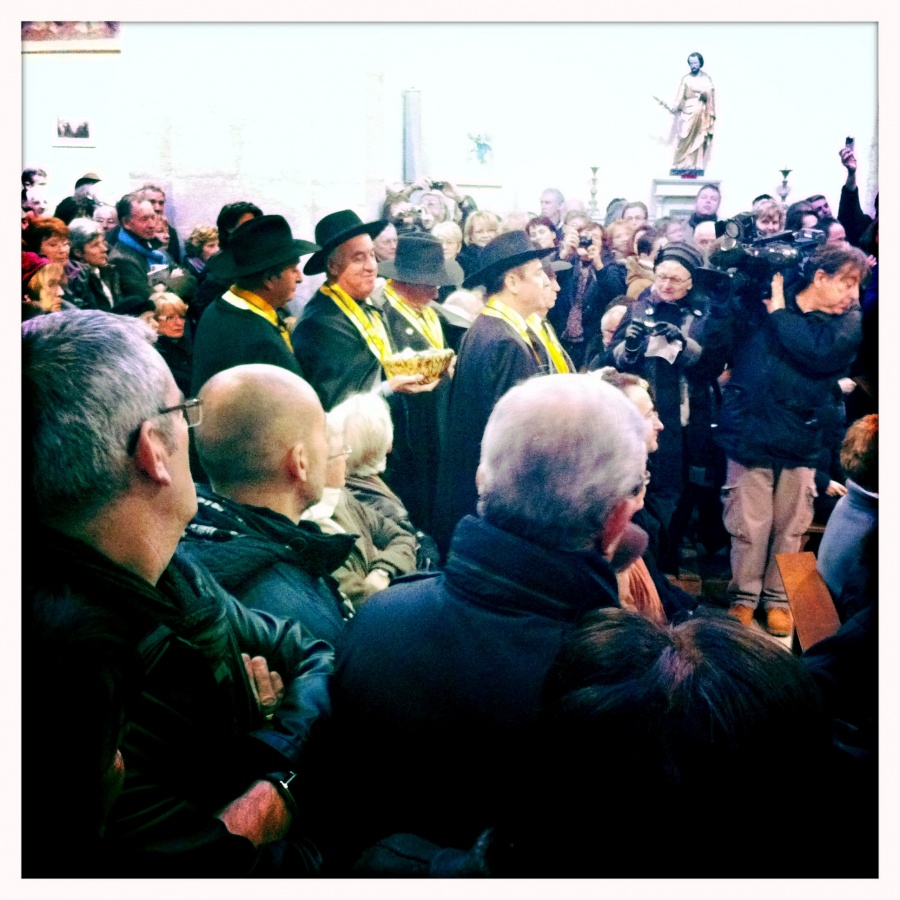
The crowd gets involved with the Auction
This year the Truffle Mass in Richeranches will take place on January 19th.
The Conferrerie offers an aperitif to all those who attend the festivities, followed by a truffle based lunch – a sought after event which requires a ticket.
Many of the attendees who are do not stay for the lunch, take advantage of the “Truffle Menus” offered at Restaurants throughout the area. Truffles in Foie Gras… “Truffled” Boudin Blanc sausage… “Truffled” Cheese … and then of course, the old favorites … Omlette aux truffes.
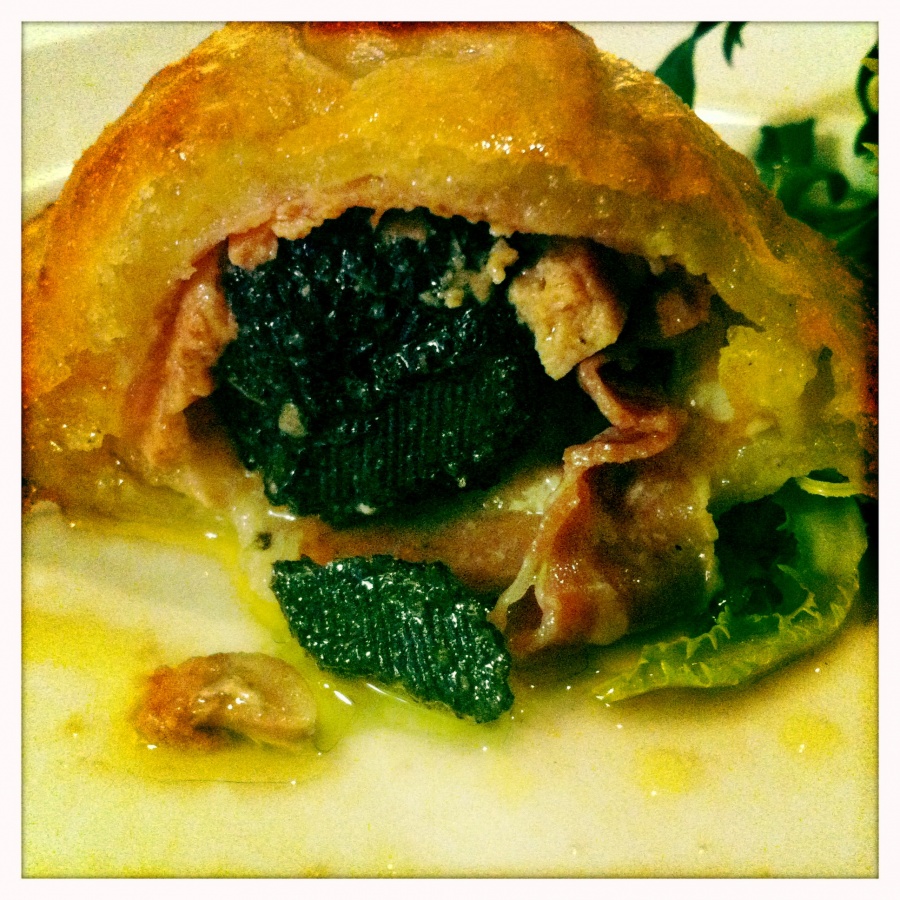
Chosson Truffe created by Chef Johannes Sailer of Restaurant Les Abeilles

Scrambled Eggs with shaved black truffles
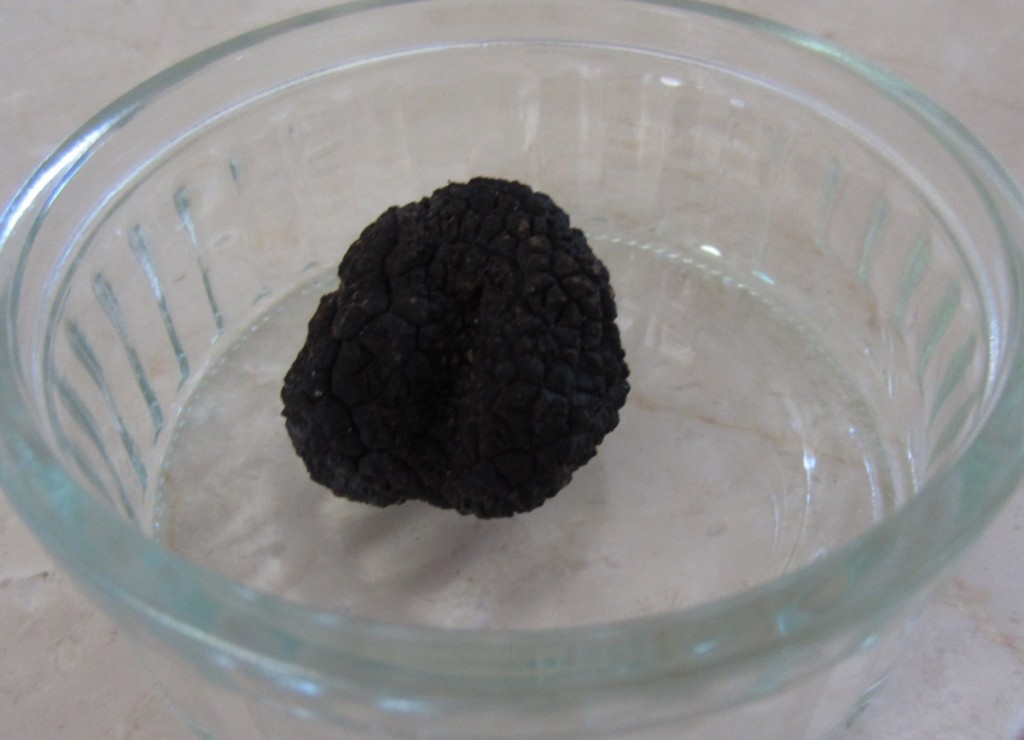
Truffles from the Luberon
There is strong interest in “truffles” and gastronomy – a number of truffle growers offer visitors tours of the truffle woods and the experience of a truffle hunt. Below are some of those tours available if you would like to take a truffle tour.
Domaine la Chênaie – Richeranches
Pierre-Andre and Simon Valayer invite guests to Friday afternoon and Saturday morning truffle hunting in Richeranches. After the hunt, attendees can enjoy “truffled toast” and local wine. Attendees may discuss the services they wish during the hunt when they contact Domaine la Chênaie for an appointment. For more information please contact:
Domaine la Chênaie, Le Bois, 84600 Richeranches 04 90 28 03 66 or 06 08 95 42 14
Domaine Saint Alban – Truffle Finding Show
Christian Allegre at Domaine Saint Alban presents a two and a half hour show each day during the months from November until the end of March. Attendance is by appointment only and attendees may participate in truffle estate discovery, truffle finding with a trained dog and finish with wine tasting at the Domaine. For Reservations please call: 04 90 28 01 66
Truffes de Provence – Gordes
Robert Florent – a Truffle Grower – and his dog “Cannelle” guide attendees through the experience of truffle hunting in the wild, from mid-November to the mid-March. Participants are invited to tastings of truffles on toast (yum! My favorite), and wine tasting at his estate in Gordes – La Bastide de Clovis. For more information and reservations:
Quartier les Blayos, 84220 Gordes 04 90 72 11 60
Featured image (Truffle Hunter with dog) by courtesy of Foodrepublic.com

One of the ironies that surrounds the story of the Knights Templar – the Warrior Monks as they came to be known, is that they were formed in Jerusalem around the year 1118 as the “Order of the Poor Knights of the Temple of Solomon”, to protect the newly established Kingdom of Jerusalem maintain it’s security, and protect pilgrims visiting the Holy Land at the end of the First Crusade of 1096. However, it is speculated that their end which was first initiated in the year 1307 and completed by 1312, was brought about by the fact that they had amassed extreme wealth and influence. They were brought down in a rather spectacular fashion by King Philip IV (Philip the Fair of France) who was heavily indebted to the Knights Templars, and Pope Clement V who had established the Popes in Avignon in the year 1309.

Jacques de Molay, nineteenth-century color lithograph by Chevauchet
The disbanding of this Order began on Friday 13th of October 1307, when Philip ordered all of the Templars in France to be arrested and imprisoned for “Satanism and other unnatural acts and practices.” Many were found guilty after torture-encouraged confessions and others for refusing to confess. In March 1314, Jacques de Molay, the leader of the Knights Templar, who had spent the previous several years in prison for being a relapsed heretic was burned at the stake on the Ile-des-Javiaux in the River Seine.

Two Templars burned at the stake, from a French 15th century manuscript
During the nearly two hundred years that the Knights Templars operated between Western Europe and Palestine, the “Templars” as their official title was abbreviated to, not only set up secure routes for pilgrims traveling from Europe to the Holy Land, but also established the first “Banking System”.
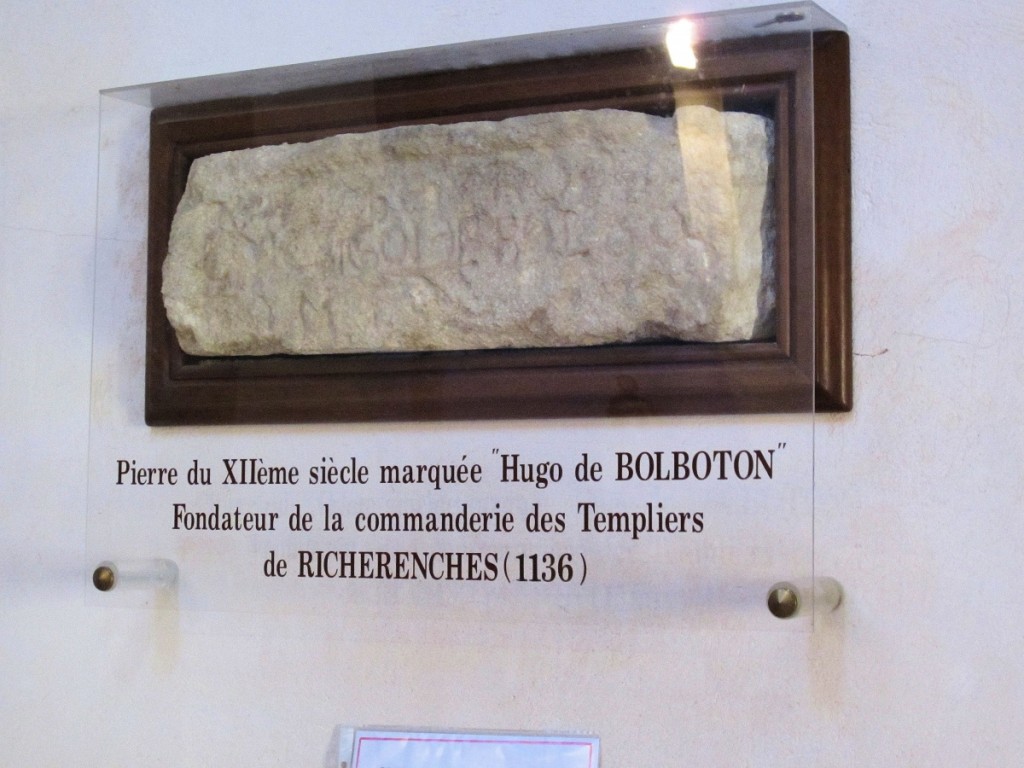
12th century stone marking Hugo de Bolboton founder of the Templars of Richeranches in 1136
When men joined the Order, they took an oath of poverty and donated all their wealth and lands to the Knights Templar, and in 1127 when they received their first large donation of land, it began a flood of many such donations and special privileges granted to the Order by various Monarchs and Popes. This together with the spoils of battles, lead to the amassing of a true fortune, and a great deal of power, having received an edict from the Pope which gave them authority to operate across the borders of many countries, but made them answerable only to Pope himself.

Placque tells of the Arrest and trial of the leaders of the Templars
The Order was the first bankers who set up the basis of the system that is still in use today. Their banking activities included, loans to Monarchs of both England and France to finance the Crusades, transporting money and valuables between Palestine and Europe, lending money to pilgrims traveling to the Holy Land and setting up a system whereby a landowner leaving to travel to the Crusades or on a Pilgrimage, could deposit their assets with the Knights Templar in their home country, and travel with a form of a Letter of Credit, which enabled them to make withdrawals from their account at other locations.

Courtyard of the Commanderie des Templiers – Richeranches
The Knights Templar set up an extensive network of Commanderies from Europe to Palestine. These Commanderies were support bases for the Knights and Pilgrims whilst on their journey. They also served as training centers for young knights in training and retirement centers for older knights. The support systems included not only the knights who were the heavy cavalry, but assistants to these knights, known as sergeants who were equipped as light cavalry and drawn from a lower social class than the knights. There were farmers who worked the land for the production of food, and other agricultural products such as corn, wool, oil and cattle that were used locally as well as to supply the Holy Land – they cared for and administered the properties. The spiritual life of the Order was seen to by the Chaplains of the Commanderie, who were all ordained priests.

Exhibition of Templar Artifacts in Richeranches housed in the old Commanderie
Provence has a number of towns that were home to Commanderies of the Knights Templar. Close to Sablet and our vacation rental homes there is a particularly good example of such a main Commanderie in the town of Richeranches. Here, the Commanderie was erected on land donated by Hugo de Bolboton, a local land owner who was committed to the cause of the crusades. The fortified structure followed a common square courtyard layout with a Chapel and a refectory at opposite ends of the structure. Although many of the original buildings of this Commanderie have been destroyed or incorporated into other structures of the village, the Refectory building, the Dining and Meeting Halls of the original Commanderie is still intact and perhaps one of the best preserved in Europe. The Commanderie in Richeranches became an important center for horse breeding. The constant need for horses during this time of warfare required a steady supply of sturdy animals and Richeranches horses became known as the best breed to carry the burden and heavy armor of the knights during battle.

The Templar Cross on the roundabout leading to Richeranches
The Commanderie at Richeranches carried a high designation on the same level as those of Aix-en-Provence and Arles, and therefore had subsidiary Commanderies in Orange, Roaix, Villedieu and Montélimar, with other support centers for the Templars in Cairanne and Vacqueyras.

Cave Cooperative at Richeranches – known as the Cave des Templiers
Despite the uncertainty associated with this group of Warrior-Monks, certain aspects of their legacy appear to be remarkable. Their temporal contribution to the safe transit of the pilgrims was direct and real, but their ongoing contribution to the modern facility of international banking may be their real legacy.
Since the official disbanding of the Knights Templar, many myths have persisted including stories of – treasure found at the Temple Mount in Jerusalem and hidden by the Templars; the Knights possession of the Holy Grail and the Ark of the Covenant; Recent authors in books of historical fiction have linked them to them to the Rosicrucians, the Priory of Sion, the Rex Deus, the Cathars, the Hermetics, the Gnostics, the Essenes, and, ultimately, lost relics or teachings of Jesus such as the Shroud of Turin or a “Judas Testament.” Interest in some of these claims has been sparked by The Da Vinci Code by Dan Brown.


